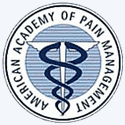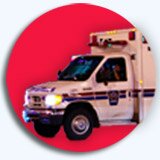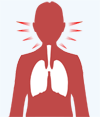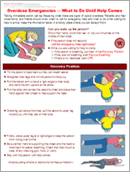Quick Reference
Partners for
Opioid Safety
Opioids911-Safety is
recommended by...

American Academy of
Pain Management
![]()
American Association
for the Treatment of
Opioid Dependence

American Chronic Pain
Association
![]()
American College of
Apothecaries
![]()
American Society for
Pain Management
Nursing
![]()
National Association
of Drug Diversion
Investigators

National Fibromyalgia
& Chronic Pain
Association
![]()
National Fibromyalgia
Association

Reflex Sympathetic
Dystrophy Syndrome
Association

The Foundation for
Peripheral Neuropathy

TNA-The Facial Pain
Association
Certifications
We comply with the
HONcode Standard
for trustworthy health
information.
![]()
Verify Here
WMA Certified

Verify Here
Opioids911-Safety has been independently developed with support provided in part by educational grants from...
Purdue Pharma L.P.
4. What should be done in an emergency?

- How can an opioid emergency be recognized?
- What are the steps to follow in an opioid emergency?
- What are other tips for handling opioid overdose?
- What if I am running out of opioid medicine and cannot get more?
A. How can an opioid emergency be recognized?
Opioid medicines can be harmful if they are not used as you are instructed, or if they are taken by an adult, child, or pet for whom they were not prescribed. Even when used correctly, caution is needed.
 The most serious potential harm from opioids is trouble breathing, called "respiratory depression." A person's breathing can slow to the point that they do not get enough oxygen. The lungs may fill with fluid or the person might inhale and choke on their own saliva or vomit, causing worse breathing problems. Action must be taken quickly or the person may suffocate, pass out, and stop breathing entirely. Soon, their heart will stop beating and they will die.
The most serious potential harm from opioids is trouble breathing, called "respiratory depression." A person's breathing can slow to the point that they do not get enough oxygen. The lungs may fill with fluid or the person might inhale and choke on their own saliva or vomit, causing worse breathing problems. Action must be taken quickly or the person may suffocate, pass out, and stop breathing entirely. Soon, their heart will stop beating and they will die.
Fortunately, respiratory depression does not usually happened suddenly - it takes some time to develop. Often, there are early warning signs of too much opioid, or "overmedication," that you and your caregivers - family or friends who help look after you - can watch for. If respiratory depression gets worse, your caregivers can recognize if you are suffering from life-threatening opioid poisoning, or "overdose." Watch for these signs of each condition (share this with your caregivers):
Signs to Watch For - Overmedication or Overdose?
|
Overmedication Warning - Call Healthcare ProviderU.S. residents also can call the National Poison Hotline at 1-800-222-1222. |
|
Overdose Poisoning - Call Emergency ServicesDial 911 in the U.S. or Canada; 112 or 999 in England or the European Union; or other numbers depending on your location. |
|
WARNING: A person who at first only seems to be overmedicated may get much worse. They should be kept awake and watched closely.
If a child or pet ever swallows an opioid that was not prescribed for them, it is always an emergency. Call for help immediately.
CAUTION: Make sure everyone in your house, including children, knows the phone numbers for your opioid prescriber, the Poison Hotline in your area, and emergency medical services. Write these numbers down and put them close to each telephone in your home.
<Click here> for labels that can be filled-in with the phone numbers.
B. What are the steps to follow in an opioid emergency?
If there are warning signs of opioid overmedication, you should...
- Stop taking the opioid medicine.
- Stay awake and move around. Do not just go to sleep thinking that the effects will wear off (you may never wake up).
- Call the healthcare provider who prescribed the opioid for you or emergency medical services to ask for advice on what to do. United States residents also can call the National Poison Hotline at 1-800-222-1222.
Opioid overdose is a life-threatening emergency situation, and you will need help from other persons if you are to survive. You should have your caregivers - family or friends who help care for you - read this information right now. Here is what to do if there are signs of overdose poisoning...
- Can you wake up the person?
Loudly shout their name, pinch their ear, or rub your knuckles on the middle of their chest. - If the person is slow to respond or does not wake at all, call for emergency help right away!
-
While you are waiting for help to come...
- If the person is breathing, put them in the Recovery Position.
- If they are not breathing, start Rescue Breathing.
- If there is no heartbeat, start CPR.
 Here are basic instructions that you can print, study, and save to have handy in an emergency...
Here are basic instructions that you can print, study, and save to have handy in an emergency...
![]() Website version: <click here>.
Website version: <click here>.
![]() PDF download version: <click here>.
PDF download version: <click here>.
![]() Descargue en PDF la versión en español: <haga clic aquí>.
Descargue en PDF la versión en español: <haga clic aquí>.
These instructions explain how to do the recovery position, rescue breathing, and CPR in adults. You and your caregivers should read these instructions ahead of time and keep them in a place where they can be easily found when needed in an emergency.
REMEMBER: If there are signs of overmedication, stop taking the opioids, stay awake, and call for instructions on what to do.
If there are signs of overdose, call emergency medical services - right away before doing anything else.
C. What are other tips for handling opioid overdose?
When there are signs of opioid overdose taking immediate action can be lifesaving. In addition to the emergency steps above, here are some more tips for what to do during opioid overdose emergencies:
- Call emergency services right away! Do not waste any time, since seconds could mean the difference between life and death.
- When calling for help, mention that opioids were taken so rescue workers will know to bring lifesaving naloxone with them.
What is Naloxone?
 Naloxone (nah-lox-own, also called Narcan®) is a prescription medicine that stops the effects of opioids. In an emergency, when an adult, child, or even a pet has overdosed on an opioid, naloxone works fast to help reverse respiratory depression so they can start breathing more normally. Naloxone may save their life but it needs to be given quickly. So, never delay in calling for emergency help and asking them to bring naloxone.
Naloxone (nah-lox-own, also called Narcan®) is a prescription medicine that stops the effects of opioids. In an emergency, when an adult, child, or even a pet has overdosed on an opioid, naloxone works fast to help reverse respiratory depression so they can start breathing more normally. Naloxone may save their life but it needs to be given quickly. So, never delay in calling for emergency help and asking them to bring naloxone.
- Do not try to make the person vomit (throw-up) the opioid medicine. They might choke or inhale the vomit into their windpipe or lungs causing damage.
- While waiting for help to arrive, if the person wakes up...
- Try to keep them awake but do not get them up to walk around. They may fall and get hurt.
- Do not put the person in a cold bath or shower. They could get hurt or even drown.
- Do not try to give the person anything to drink. They could choke on it.
To perform life-saving emergency procedures properly, especially CPR, many persons would benefit from added instruction and training. Here are some resources:

![]() There is a good website on the Internet, called "Learn CPR," that has instructions, including videos showing how to do CPR on adults, children, and infants. Instructions are provided in English, Spanish, and 5 other languages. There also are free CPR-instruction "apps" for the iPhone and Android cell phones. To go to the website <click here>.
There is a good website on the Internet, called "Learn CPR," that has instructions, including videos showing how to do CPR on adults, children, and infants. Instructions are provided in English, Spanish, and 5 other languages. There also are free CPR-instruction "apps" for the iPhone and Android cell phones. To go to the website <click here>.

![]() You can get hands-on training from Red Cross chapters around the world. Look in the phone book for your nearest Red Cross chapter or, to find locations offering training in the U.S., <visit here>.
You can get hands-on training from Red Cross chapters around the world. Look in the phone book for your nearest Red Cross chapter or, to find locations offering training in the U.S., <visit here>.

![]() The American Heart Association (in the U.S.) offers courses on CPR at a variety of convenient locations and at different times. To find a training course near you <visit here>.
The American Heart Association (in the U.S.) offers courses on CPR at a variety of convenient locations and at different times. To find a training course near you <visit here>.

![]() In certain cases, both the American Heart Association and Red Cross allow the use of "Hands-Only CPR" (also called "Compression-Only CPR"). For persons who have not been trained in CPR, or cannot recall how to do it, this involves simple chest pumps using the hands without the addition of rescue breathing. More information is available <here>.
In certain cases, both the American Heart Association and Red Cross allow the use of "Hands-Only CPR" (also called "Compression-Only CPR"). For persons who have not been trained in CPR, or cannot recall how to do it, this involves simple chest pumps using the hands without the addition of rescue breathing. More information is available <here>.
Note: If there is severe respiratory depression (very slow or no breathing), "Hands-Only CPR" alone may not be helpful.
D. What if I am running out of opioid medicine and cannot get more?
 You should be prepared for what to do if you are ever in danger of running out of your opioid medicine before your prescription can be refilled. For example, this could happen if you ruin part of your opioid supply, or during a disaster like a major storm when access to all health services is cut off, or if you lose it during travel.
You should be prepared for what to do if you are ever in danger of running out of your opioid medicine before your prescription can be refilled. For example, this could happen if you ruin part of your opioid supply, or during a disaster like a major storm when access to all health services is cut off, or if you lose it during travel.
Since your body is used to the opioid medicine and depends on a steady amount of it to feel and function well, you may experience effects of opioid withdrawal if the opioid is suddenly reduced or stopped. Opioid withdrawal is usually not harmful or life threatening, but it can be very unpleasant and even painful.
Going through opioid withdrawal is somewhat like having a bad case of the flu. It can take a half-day or longer after reducing or stopping an opioid medicine before withdrawal starts. The amount of withdrawal discomfort, and how long it lasts, depends on the type of opioid medicine that was taken, how long it was used, and the dose. Here is what to watch for...
Symptoms & Signs of Opioid Withdrawal |
|
|
|
|
Everyone does not experience all of these effects during opioid withdrawal, at all times, or to the same extent. |
|
NOTE: In persons taking opioids for only several days to relieve short-term or acute pain, withdrawal usually does not develop. However, if your opioid medicine must be greatly reduced or stopped after taking it for weeks or months, you can expect to have some withdrawal effects.
Here are some helpful suggestions on what to do ...
Ideally, stopping the opioid medicine would be a slow and gradual process, called "tapering," under the care of a healthcare provider. If this is not possible, it is important to make an effort to taper the dose on your own as slowly as possible.
- The best way to avoid serious withdrawal symptoms is to plan ahead and reduce the amount of medicine you are taking or how often you take it long before you run out of the opioid.
- Count the amount of medicine you have. Figure how much you can reduce the amount of opioid you are taking to make it last longer. For example...
- If you are taking 4 opioid pills each day, spread out the time between doses and take only 3.
- Or, if you are taking 3 pills each day, cut back to only 2.
- If you are taking only 2 long-acting opioid pills each day, switch to taking it once each day. After several days, start taking 1 pill every other day.
- If you are using a long-acting opioid patch, leave it on a day or two longer than usual. There will still be a bit of opioid medicine left in the patch.
 CAUTION: Do not cut or crush tablets, open capsules, or cut opioid patches. This can release the entire opioid dose at once, causing overdose and possible death. Instead, take the whole tablet or capsule or apply the whole patch, but take or apply the medicine less often than usual.
CAUTION: Do not cut or crush tablets, open capsules, or cut opioid patches. This can release the entire opioid dose at once, causing overdose and possible death. Instead, take the whole tablet or capsule or apply the whole patch, but take or apply the medicine less often than usual.
There is one exception: methadone tablets can be cut into smaller portions if necessary in an emergency.
WARNING: It can be very harmful to take anyone else's prescription pain medicine - even in an emergency - since you do not know how you will react to it or what the proper dose would be for you.
- The reduction in opioid medicine dose or how often you take it may result in some withdrawal symptoms, but it is better than having to suddenly go without opioids entirely by running out.
- Drink a lot of fluid, try to stay calm, and keep reassuring yourself that the withdrawal effects will pass with time and you will eventually feel better.
- To help ease withdrawal symptoms there are some common remedies that may help, if you have them at hand...
- For pain, which might feel worse during opioid withdrawal, you may be helped by taking NSAIDs, like aspirin or ibuprofen, or taking acetaminophen - but only if these medicines have been safe for you to use in the past.
- For hot flashes or cold flashes (chills), try taking acetaminophen (Tylenol®).
- For diarrhea, loperamide (Imodium®) may help.
- Stomach cramps or nausea, as well as diarrhea, may be helped by taking bismuth subsalicylate (for example, Pepto Bismol®, Kaopectate®, and other brands).
- Herbal teas, especially valerian root, may help to calm you down and relieve stress.
- There also are the old standbys - applying cold or heat, or massage - that may relieve some of the pain and other withdrawal effects.
How long will the opioid withdrawal last? Typically, withdrawal from short-acting opioids, like morphine and others, can take 5 to 10 days. Withdrawal from methadone or other long-acting opioids takes longer, possibly a couple of weeks or more. Always seek help from a healthcare provider as soon as you can.






 Intoxicated behavior - confusion, slurred speech, stumbling.
Intoxicated behavior - confusion, slurred speech, stumbling. Person cannot be aroused or wakened, or is unable to talk if awakened.
Person cannot be aroused or wakened, or is unable to talk if awakened.